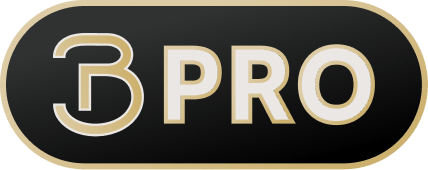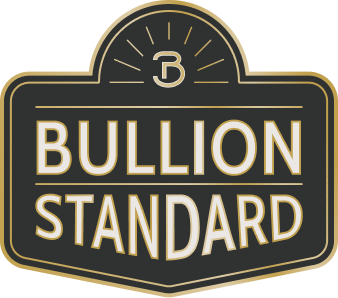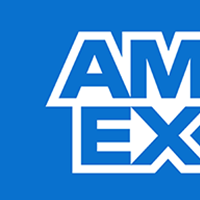Wheat Back Penny Value: A Unique Bullion Investment Opportunity
By Bullion Standard ·
7 min read

Stacks of one troy ounce Gold Eagle coins from the US Treasury Mint, showcasing pure gold investment options.
Discover the Allure: Why the Wheat Back Penny Captivates Collectors and Investors
The wheat back penny, more formally known as the Lincoln Wheat Cent, has captivated both collectors and investors since its debut in 1909. Beyond its classic design, featuring the revered image of Abraham Lincoln, these pennies are cherished not only for their numismatic value but also as potential investments. The allure lies in their rarity, historical significance, and fluctuating market demand, prompting many investors to contemplate their inclusion in a diverse asset portfolio. With its rich legacy and tangible appeal, the wheat back penny stands out as an intriguing option in the world of collectible coin investments.
Understanding the Value of Wheat Back Pennies
A wheat back penny, often referred to as simply a "wheat cent," is a one-cent coin that was produced by the United States Mint from 1909 to 1958. The coin is known for its design, featuring two stalks of wheat on its reverse side, which represents prosperity and growth—a reflection of the era's economic aspirations. Its front face boasts a portrait of Abraham Lincoln, symbolizing stability and leadership. The combination of historical significance, age, condition, and rarity significantly influences the wheat back penny's value. Coins from certain years or with specific mint errors can command a premium as collectors vie for these unique pieces of Americana.
In the broader landscape of collectible coins, wheat back pennies occupy a niche space. Unlike traditional bullion coins that derive value purely from the metal content, wheat back pennies hold historical and collectible appeal, bridging the gap between numismatic interest and bullion investment. Understanding these factors is crucial for determining their potential return on investment (ROI).
Factors Influencing Wheat Back Penny Value
Dive Into History: The Significance of the Lincoln Wheat Cent
The Lincoln Wheat Cent was introduced in 1909 to mark the centennial of Abraham Lincoln's birth. This connection to one of America’s most revered presidents imbues each penny with a piece of U.S. history. This historical allure can enhance desirability among collectors, particularly those interested in Americana.
The Hunt for Rarity: Why Some Wheat Pennies Are Collector's Gold
Certain wheat back pennies are incredibly rare due to limited mintages or unique mint errors. For example, the 1909 S V.D.B. variant is highly sought after among collectors due to its limited production run and distinctive back markings. Enthusiasts compete fiercely for these rarities, driving up market prices significantly.
Understanding Market Dynamics: What Drives the Wheat Penny's Value
Trends in the collecting community can have a pronounced impact on wheat penny values. As more collectors enter the market or seek specific rarities, demand can surge, affecting value. This demand-driven value is buoyed by media attention, prominent auctions, and discoveries of previously unknown mint errors, which can ignite renewed interest.
How to Evaluate a Wheat Back Penny
- Examine the Coin’s Condition:
Grading is essential in determining the value of a wheat back penny. Coins are evaluated on their physical condition, with uncirculated coins ("MS" or Mint State grades) fetching higher prices. Professional grading services like PCGS or NGC can provide an authoritative assessment of the penny’s state.
- Identify Mint Marks and Errors:
Mint marks can greatly influence a penny’s value. For instance, pennies minted in San Francisco (marked with an "S") or Denver (marked with a "D") can be more valuable, especially if they were part of a limited issue. Additionally, certain mint errors, such as double dies or off-center strikes, can significantly enhance a coin’s collectibility and market price.
- Research Current Market Trends:
Staying informed about recent sales prices, auction results, and collecting trends is crucial for evaluating a wheat penny's market potential. Engaging with numismatic publications, forums, and coin shows can provide valuable insights into the current market landscape.

Wheat Back Pennies: Balancing Pros and Cons for Investment Success
Pros:
- Affordable Entry Point:
For those new to coin collecting or investing, wheat back pennies offer an accessible starting point. Their lower cost compared to gold or silver coins makes them appealing to beginners or enthusiasts seeking to expand their collections.
- Potential for Appreciation:
Wheat back pennies can appreciate significantly over time, especially rare variants or those with historical importance. This potential for growth can yield substantial returns for dedicated collectors.
- Tangible Asset:
These coins offer more than financial value; they embody a tangible connection to history, adding a narrative aspect and a storied provenance to one's investment portfolio.
Cons:
- Market Fluctuations:
Like all collectibles, wheat back pennies are subject to market volatility. Changes in collector interest or economic conditions can impact their resale value.
- Knowledge and Research:
Successful investing requires a deep understanding of numismatics, including a coin’s authenticity and historical context. Without sufficient knowledge, investors may struggle to assess a coin’s true worth.
- Limited Liquidity:
Compared to gold or silver bullion, wheat pennies may not be as easily liquidated. Finding a buyer willing to pay the desired price can sometimes be challenging, especially for less sought-after issues.
Adding Historical Treasure to Your Portfolio: A Wheat Back Penny Perspective
Wheat back pennies present a unique investment opportunity—one that merges historical significance with collectible value. Their potential for appreciation, historical connections, and collectible allure position them as worthwhile considerations for a diversified investment strategy. Those interested in exploring this niche should commit to thorough research and remain abreast of market trends to maximize potential returns. By understanding the distinct attributes that influence a wheat back penny’s value, investors can add these storied coins confidently to their portfolios, combining history, rarity, and investment potential.
Frequently Asked Questions (FAQ)
What makes the wheat back penny a unique option for bullion investors?
Wheat back pennies offer a blend of collectible allure and historical significance that sets them apart from standard bullion investments. Their historical connections and design intricacies make them attractive to numismatic enthusiasts.
How has the historical performance of wheat back pennies influenced their value as an investment?
Historical trends show that wheat back pennies, particularly rare variants, have appreciated significantly over time, appealing to collectors looking for gains beyond their numismatic value.
What factors should investors consider when evaluating the worth of a wheat back penny?
Investors should assess mint marks, condition, rarity, and current market trends to determine value. These components heavily influence a penny's potential investment return.
Are there specific years or mint marks of wheat back pennies that are more valuable to collectors and investors?
Yes, pennies from certain years or with specific mint errors—such as the 1909 S V.D.B. or the 1914 D—are especially coveted due to their rarity and distinctive features.
How can the wheat back penny be used to diversify a bullion investment portfolio?
Incorporating wheat back pennies adds numismatic value to a portfolio, offering diversification through historical significance and collectible appeal, rather than relying solely on metal content.
Unearth Historical Value
Inspired by the captivating world of wheat back pennies? These coins offer a unique blend of history, collectibility, and potential financial gain. Whether you're a seasoned collector or an intrigued newcomer, wheat back pennies can add depth to your investment strategy. To enhance your portfolio with coins that tell a story, explore Bullion Standard for insights and opportunities. Embark on a journey that bridges the past and the future through collectible investments.





















